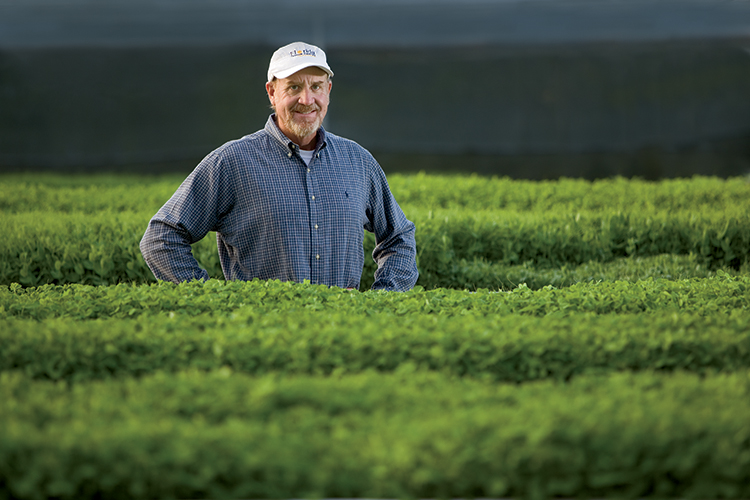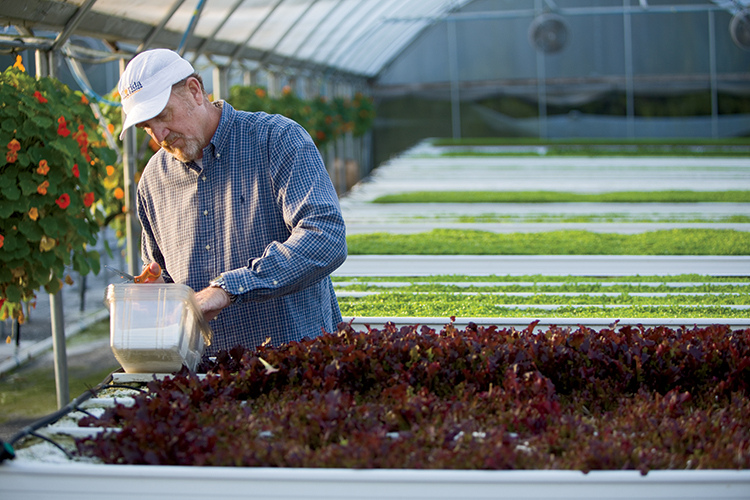Home > Florida > Florida Crops & Livestock > Florida Microgreens – Tiny Plants, Big Flavor
Florida Microgreens – Tiny Plants, Big Flavor
In partnership with: Florida Department of Agriculture and Consumer Services

Growing delicate microgreens in Florida’s hot, humid climate is a challenge, but several innovative growers have beaten the odds and are using hydroponic greenhouses to grow varieties of lettuces, herbs and other greens that chefs are clamoring to feature in their dishes.
One of these growers, Marvin Wilhite Jr. of Cahaba Clubs Herbal Outpost in Odessa, began his hydroponic microgreens operation in the late ‘90s. He has grown his business from one greenhouse to 12 and ships his product all over Florida and across the Southeast.
![Microgreens [INFOGRAPHIC]](https://eadn-wc01-4177395.nxedge.io/wp-content/uploads/2020/05/Screen-Shot-2015-09-01-at-10.44.59-AM.png)
Getting Started
“It’s difficult to get started in this industry,” Wilhite says. “Startup cost is expensive, and we’re growing a commodity. I don’t know many hydroponic growers who grow commodities that are still in business.”
But despite challenges, Wilhite says it is possible to run a profitable microgreens business in Florida — you just have to be willing to experiment and work hard.
For the plants to thrive, Wilhite employs evaporative coolers, keeps the plants under 70 percent shade in the summertime and is constantly circulating fresh air into the greenhouses.
Because each plant has a different germination rate, Wilhite plants something every day to be able to meet the demand for his greens.![Hydroponics [INFOGRAPHIC]](https://eadn-wc01-4177395.nxedge.io/wp-content/uploads/2020/05/Screen-Shot-2015-09-01-at-10.45.39-AM.png)
“Some things take nine days; some take 34 days,” he says. “You have to plant every day to complete the circle. You have to be on top of it all day, every day.”
One huge benefit of hydroponic growing — for the grower’s bottom line and the environment — is decreased water usage.
“We’re very environmentally friendly — we don’t use much water and we recirculate all our ingredients,” Wilhite says. “At one point, we had a one-acre lettuce house, and we produced about 2,000 to 3,000 heads of lettuce every day, four days a week. That one acre produced the equivalent of 3,500 acres of field-grown lettuce.”

Increasing Demand
As the food scene across the country has evolved, demand for microgreens has steadily increased.
“Right around 2002, the industry started changing,” Wilhite says. “We went from orange wedges and flat leaf parsley as garnishes to food becoming art. Chefs are presenting art on plates — what they do is amazing.”
Because of this trend, chefs are always searching for unique lettuces and herbs with particular colors and flavor profiles.
“In my greenhouses, I have anywhere from 28 to 40 flavor profiles being grown at one time,” Wilhite says. “Chefs are wanting things like wasabi microgreens that can be served with seared tuna. They’re looking for really cool things that will add flavor to and complement a dish.”
The movement toward using locally grown products has also benefited Wilhite.
“We’re very thankful that the chefs nowadays are looking for local products,” Wilhite says. “Our local chefs will pretty much always take something from Florida over other areas.”
Another key to Wilhite’s success has been partnering with Sysco, a food distribution company.



